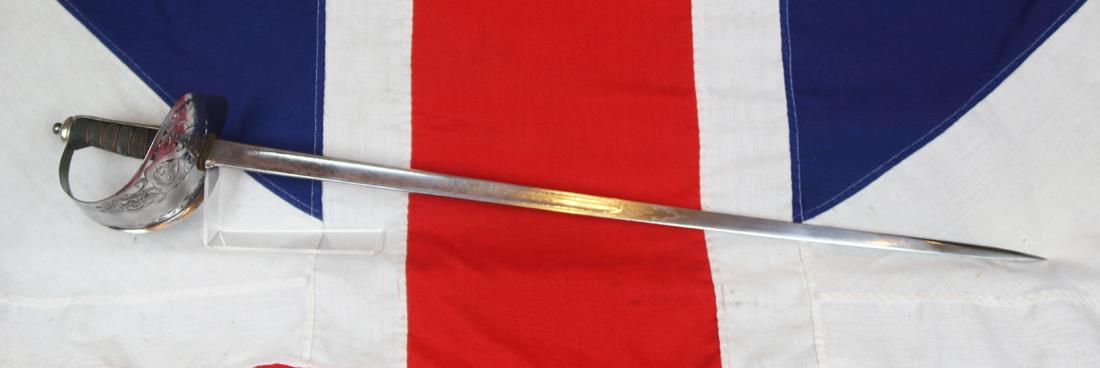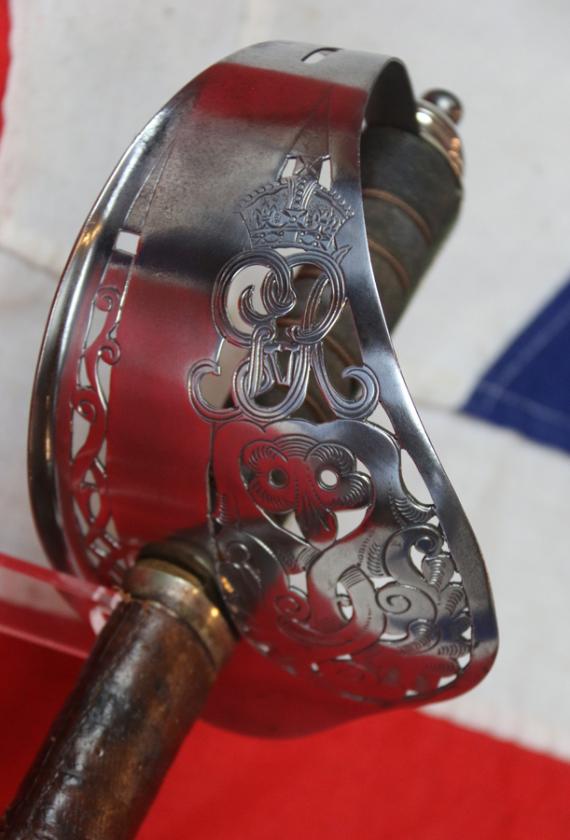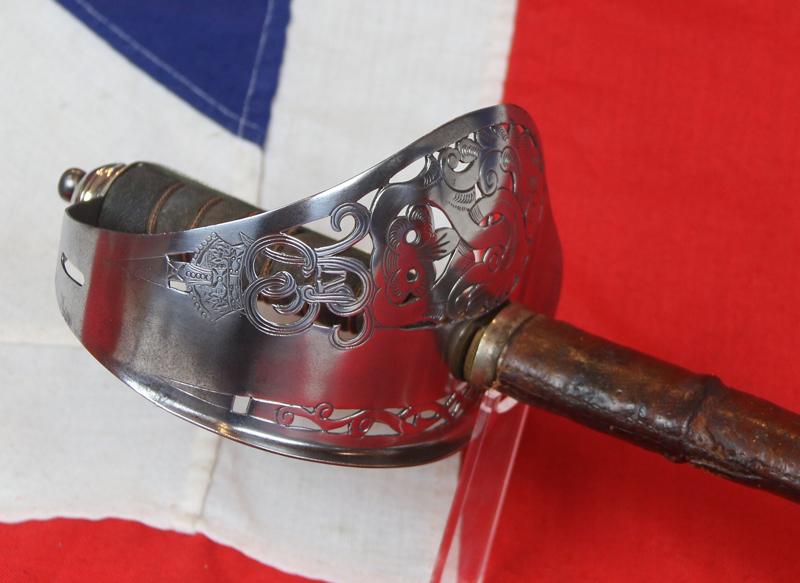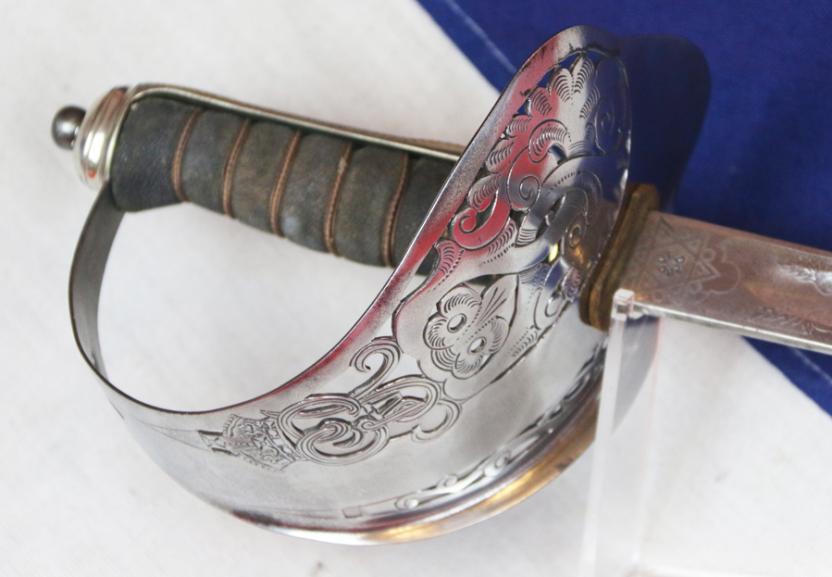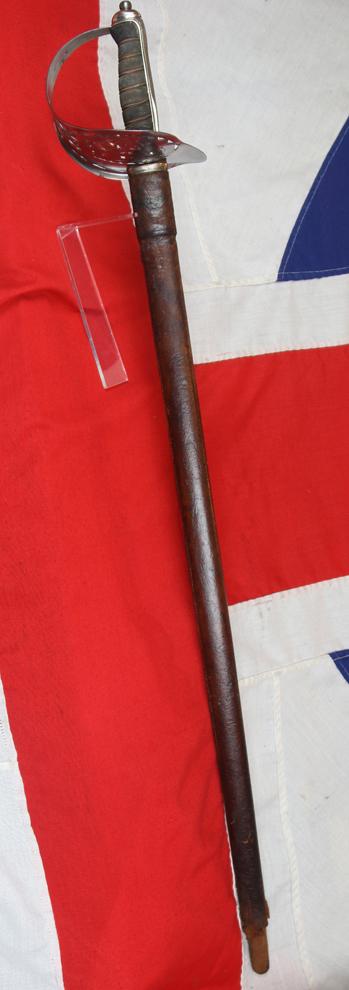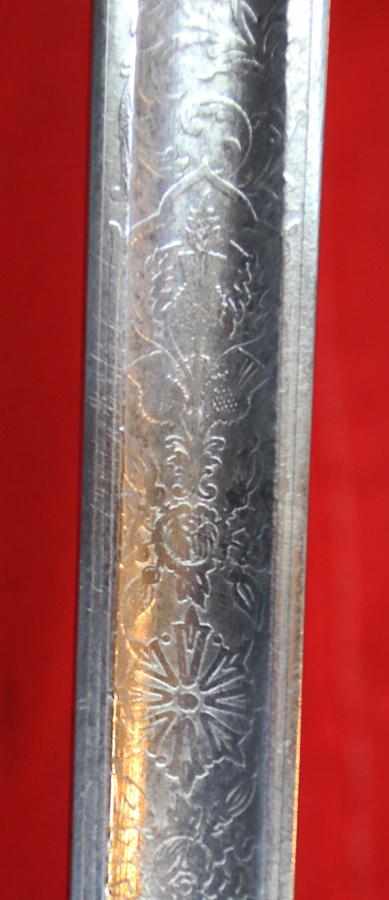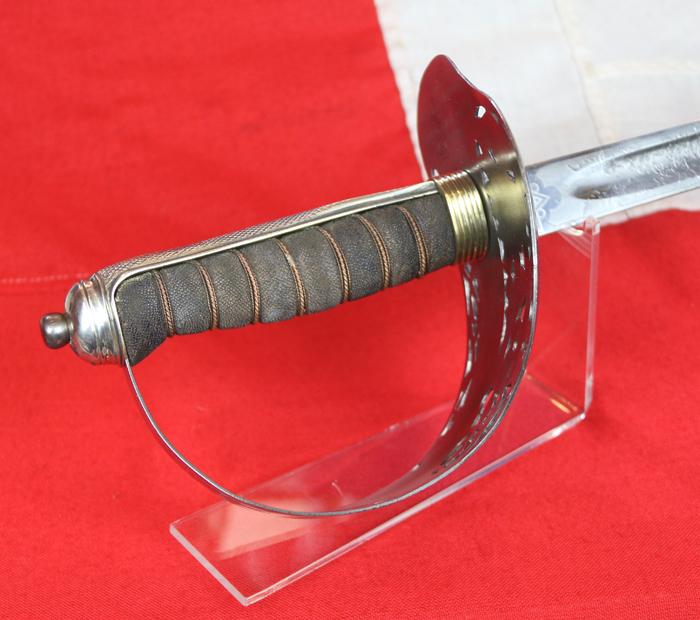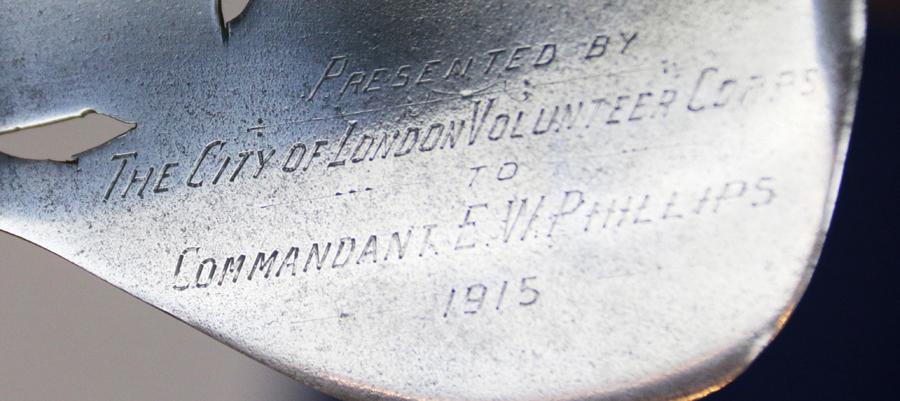A Presentation WW1 & WW2 Infantry Officers Sword 1897 Pattern
A Good 1897 pattern WW1 period Infantry officer's sword with presentation inscription, fully etched blade, original wire bound sharkskin grip, original FS scabbard lacking chape and worn leather, used in WW1 and WW2. Inscribed as presented by his brother officers of the City of London Volunteer Corps in 1915. Acquired from the past owner who informed us he its original owner was a doctor in both wars, but nothing much known, then after polishing and cleaning the presentation inscription we able to read the inscription clearly, and after diligent research the only officer we could find with the same name, initial and specific spelling of two L's in Phillips who also served in both wars, was Major-General Sir Edward Phillips KBE CB DSO MC (19 December 1889 – 14 May 1973). It was thus concluded this was almost certainly his sword.
He was a British military doctor, who served throughout World War I, and saw action in Afghanistan/North West Frontier, the Middle East and was then a leading medical officer in the British Army through World War II, in Africa, Italy, D-Day, the liberation of Bergen-Belsen concentration camp and the establishment of the British Army of the Rhine. He had, arguably, the most distinguished field service career of any Army doctor of this the 20th century
He joined the army in 1914, initially in reserve militia and then sent on to the Western Front in France as a medical officer from 19 December 1914. The role of the medical officer in wartime was to be the first step in the casualty treatment and evacuation with an aid post in the trenches supported by orderlies and stretcher bearers. Medical officers were both within areas under the fire and directly exposed to snipers if they treated wounded in the open.
He was promoted to captain in 1915, then awarded the MC in November 1916. The citation read:
"For conspicuous gallantry and devotion to duty. He collected wounded under heavy shell, rifle and machine-gun fire. He set a fine example by his complete disregard of danger."
In 1917 he was serving with the 105th Field Ambulance (attached to the 35th Division). In January 1918 he was promoted acting Major, and shortly thereafter in August, acting Lt-Colonel "while in charge of a medical unit". The unit in question was 106th Field Ambulance. The 106th Field Ambulance was also attached to the 35th Division, through to the German spring offensive and the final advance in Flanders. A field ambulance would provide relays of stretcher bearers and some first aid, within the area where they could be under fire. They were a mobile unit, and they sought to stabilise casualties to go back to a Casualty Clearing Station or Dressing Station. A full strength Field Ambulance comprised 10 officers and 224 men.
In March 1919 he reverted to his substantive rank of captain on being moved to a new post.
He was mentioned in dispatches 4 times including in 1918 and 1919.
He was awarded the French Croix de Guerre in 1919, in addition to the 1914-15 Star, British War Medal and Victory Medal. He was also awarded the DSO in the 1919 Birthday Honours as part of a group honoured for "For distinguished service in connection with military operations in France and Flanders. He joined a directly active unit in 1941 when he was appointed Colonel and Assistant Director Medical Services, 10th Indian Infantry Division around its formation. An Assistant Director was head of the medical services for a Division. The Division was commanded by Maj-Gen.Bill Slim and at that time it landed in Basra, captured Baghdad and the oilfields of Mosul as part of the Anglo-Iraqi War which was linked to World War II. The division then invaded Syria (in pursuit of Vichy French aeroplanes placed there by the Germans) until June, then invaded Iran as part of the Operation Countenance Anglo-Soviet invasion of Iran to secure the Iranian oilfields from the Axis powers for the Allies and Russians. The division then returned to a static guarding role in Mosul. Medical Services in the division were drawn from the RAMC and Indian Army Medical Corps and included the 14th, 21st & 30th Indian Field Ambulance. In September 1941 he was promoted to full Colonel, with seniority backdated to his previous job in 17 November 1938
In April 1942 he rejoined the British Army as Deputy Director Medical Services XIII Corps. "Deputy Director" was the title given to Corps level commanders for the RAMC (and other service corps) in Corps-level formation, originally as a Colonel-level appointment and later Brigadier level. XIII Corps was commanded by Lt-Gen William Gott and was part of the British 8th Army in the North African desert, which had suffered serious reverses. General Claude Auchinleck was shortly to take over. This period of the North African Campaign included the retreat to Tobruk, the defeat at Gazala (at the same time as Phillips was briefly a Prisoner of War, see below), the Mersa Matruh defeat, and the First Battle of El Alamein, which halted the Axis advance and led to the arrival of General Montgomery who Phillips was to follow for the rest of the war, during Operation Torch, the 2nd Battle of El Alamein, then to Italy, France and Germany. it has been polished bright, but not parade ground ready and has traces of old light pitting to the hilt, and its FS scabbard has lost the leather chape
a new chape would cost £45
Code: 23726
595.00 GBP

